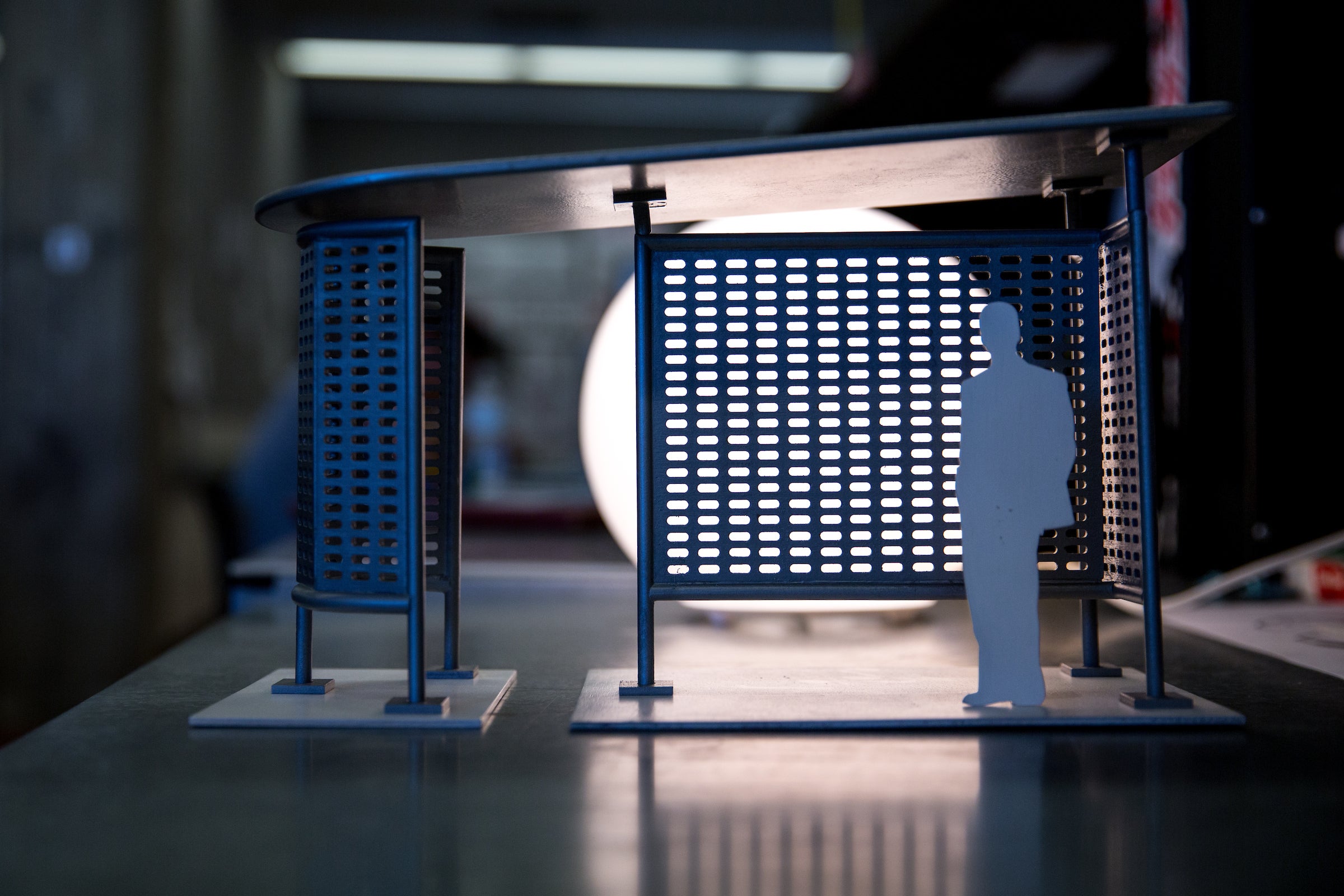Editor's note: This story is being highlighted in ASU Now's year in review. To read more top stories from 2017, click here.
Four Arizona State University students are about to make the lives of millions of people easier and more comfortable.
There were more than 32 million bus rides taken in Phoenix last year, according to Valley Metro figures. Soon some of those passengers will be waiting at stops designed by the quartet to provide much more shade at all times of day.
“If we can make it easier and make their lives a little better, that’s a good feeling,” team member Ethan Fancher said.
Their new bus stop design won a contest open to industrial design students at ASU last academic year.
Seniors Fancher, Dan Duquette, Derek Smoker and sophomore Erlend Meling — all industrial design majors in the Herberger Institute for Design and the Arts — worked on the project.
They haven’t even graduated, and they’ve just completed a project any established firm would kill for, in the fifth-biggest city in the country, that will be highly visible to millions of people every day.
“It’s still really surreal,” Fancher said.
“I feel like it’s all downhill from here,” Smoker said.
A prototype of the bus stop that will soon be installed around Phoenix sits on Dan Duquette's desk in ASU’s Design North building. The physical prototype, which is constructed mainly out of wood, was designed by Ethan Fancher, a senior industrial design major. One inch of the model equates to a foot of the finished product. Photo by Anya Magnuson/ASU Now
Their stop looks sleek, but as anyone who has waited for a bus in Phoenix during the summer will tell you, it’s shade that counts.
Shade was the top priority. The stops also had to be ADA-compliant. Being vandal-proof was another necessity.
The stop provides shade no matter what time of day or what angle the sun is striking it. “We took inspiration from a sundial,” Fancher said. “No matter where the sun is, there will always be shade.”
The team ran the design through a computer simulation of 12 hours of sun. It provides shelter at any time of day, when the sun is at any angle.
“They appreciated the thought we put into it,” Fancher said.
There’s an alcove to the side so wheelchair users can wait under cover.
Seating has yet to be decided, but it will be individual, not bench-style. “We found out in research most people won’t sit next to each other on a bench,” Fancher said. “It’s this weird human-nature thing.”
The stops will be made of steel. Colors haven’t been finalized, but the quartet likes a rust finish. Even if it gets vandalized with a Sharpie, it won’t stand out.
Damaged stops will be replaced first, then stops with the highest ridership. Bus stops with no shelter at all will be next on the list. It’s a modular design that can be added to, suiting crowded stops like those in front of high schools.
The city has a five-year plan to have 400 bus stops with their design.
“One of their main focuses is to replace the bus stops with no features with these,” Fancher said.
The team worked on the design for two months. Competition rules limited them to 20 hours of work per week per person. Groups of students competed and presented. The city whittled the choices down to five finalists. Fancher’s team found out they won last May.
After they won, the team met several times with a citizens transportation committee before the design went to the city council for approval.
“It wasn’t as scary as I thought it would be,” Smoker said.
“We thought it was going to be very dry,” Fancher said.
There was a considerable amount of back and forth with the citizens committee. “We expected that,” Fancher. “We’re trained for that.”
City councilman Daniel Valenzuela told the team in a meeting that whether they leave or stay in Phoenix, they will always be able to point to their bus stops with pride.
Top photo: ASU industrial design students (from left) Derek Smoker, Erlend Meling, Ethan Fancher and Dan Duquette hold a prototype of the bus stop they designed. Their design will be used for new bus stops around Phoenix. This includes covering stops that do not currently have a structure as well as the new stops that will be created in Phoenix’s bus route expansion. Photo by Anya Magnuson/ASU Now
More Environment and sustainability

From road coatings to a sweating manikin, these ASU research projects are helping Arizonans keep their cool
The heat isn’t going away. And neither are sprawling desert cities like the metro Phoenix area.With new summer records being set nearly every year — 2024 was the warmest year on record for…

New study on Arctic’s ‘Last Ice Area’ highlights the urgency for reducing warming
The Arctic’s “Last Ice Area” — a vital habitat for ice-dependent species — might disappear within a decade after the central Arctic Ocean becomes ice-free during summer, which is expected…

ASU fire expert Stephen Pyne on learning to live alongside fire
Stephen Pyne is having a busy retirement. On top of caring for chickens, sheep and citrus on his urban farm in Queen Creek, Arizona, the Arizona State University professor emeritus is being called on…

